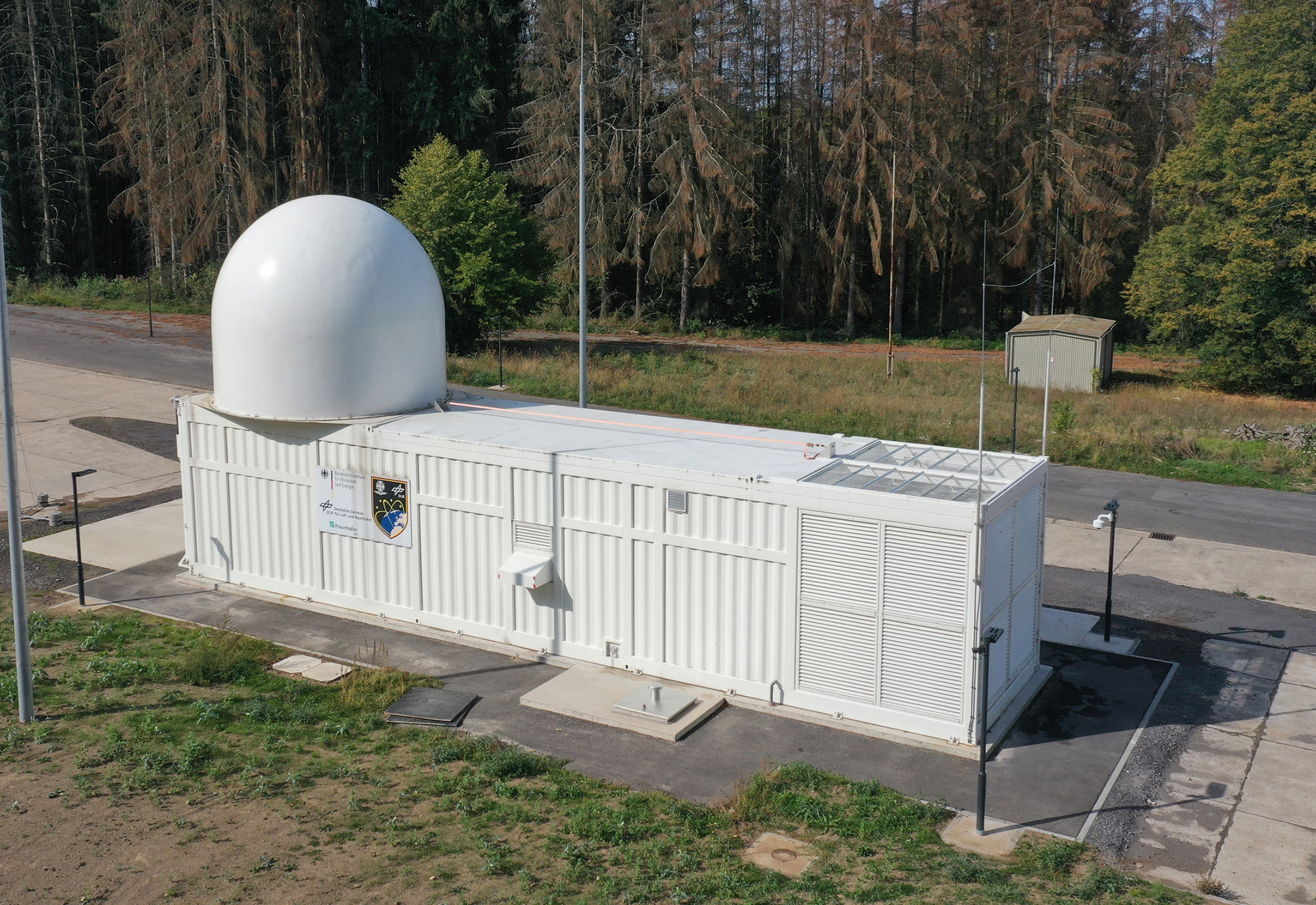Pioneering work in commercialization
Be it the Federal Armed Forces, or telecommunications companies: Satellite operators want to protect their satellites from colliding with space debris. The GESTRA phased array radar, developed by Fraunhofer FHR, can do this. The Institute is currently working to commercialize GESTRA with an industrial partner. There is great interest both nationally and internationally.
What is buzzing around in the low-Earth orbit (LEO), and where? This question is not only interesting in itself, but also entirely relevant to our everyday lives. After all, the LEO is the orbiting location of the satellites that supply us with information – be it for navigation systems or critical infrastructures such as communications, the stock exchange and others. A lot of space debris, which poses an increasing threat to the satellites, is also floating around up there. Monitoring the low-Earth orbit and knowing what moving objects it contains requires a phased array radar with elevated beam agility. Working on behalf of the German Federal Ministry of Economics, Fraunhofer FHR has developed one of these as an experimental system. The GESTRA semi-mobile space surveillance radar was handed over to DLR and the German Space Situational Awareness Center in September 2020.
Breaking new ground: Side by side with industry
Fraunhofer FHR is now working on bringing the system into commercial use. Potential end customers, such as the Federal Armed Forces, are showing great interest in Germany's first space surveillance radar – not just nationally, but worldwide. The challenge: At present, the sensor is still at a stage where it cannot as yet be commercialized directly. Transforming this experimental system into a marketable product ready for series production requires a long-term collaboration with one or more industrial partners. Partnering with one or several German industrial enterprises would be ideal, as GESTRA is considered a safety-relevant key technology.
Fraunhofer FHR strives for a close collaboration with the partner – after all, the transfer of know-how has to be ensured. It will also accompany the development-related steps as a consultant and provider of know-how: The steps towards the finished product are to be taken side by side. As simple as this may initially sound, the commercialization of such a complex system at this scale has never occurred before at the Fraunhofer Society. As a result, there is no blueprint for the processes it requires. To a certain extent, pioneering work needs to be done here to pave the way for other large-scale projects as well. This will benefit not only research and industry partners, but also end customers, who will thus be able to access new technological developments at an earlier stage.
